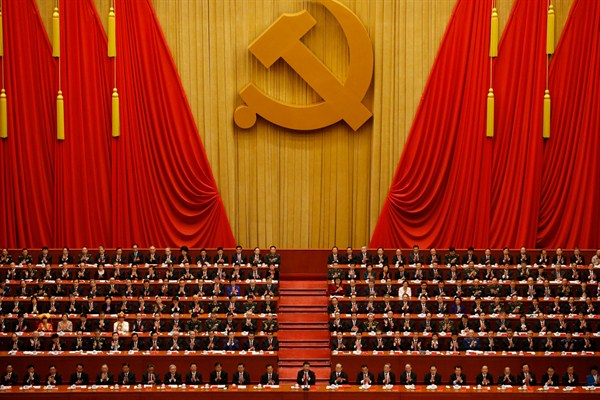On Friday, U.S. President Donald Trump will embark on his first official trip to Asia, visiting five countries over 12 days. The itinerary includes a stop in China, where President Xi Jinping has emerged from October’s Communist Party Congress stronger than ever. In his second term, Xi is expected to continue his quest to make Beijing Asia’s undisputed seat of power, while extending his own power at home. Xi’s interactions with Trump will be closely watched this month. WPR has compiled 10 articles detailing Xi’s vision for China and what it means for the region.
Purchase this special report as a Kindle e-book.
Consolidating Control
To Decipher China’s Party Congress, Look to What We Already Know About Xi
The Chinese Communist Party’s Congress, a once-every-five-year gathering, drew to a close last week without Xi anointing a clear successor. Whether he plans to break with his immediate predecessors by hanging onto power after his second term remains unclear. In trying to predict Xi’s next moves, it’s worth examining his record so far, as Judah Grunstein observed last week.
Since assuming office in 2012, Xi has audaciously pursued a platform that can be distilled as “Make China Great Again,” relying on three pillars: fixing the Communist Party, transforming the economy and establishing China as a global player. Xi has made progress weeding out corruption and consolidating power within the Communist Party, Damien Ma explained last November, but he has yet to make a meaningful move on the economy.
Although China’s growth has slowed and the sweeping economic reforms Xi pledged are nowhere to be seen, any accompanying shift in public opinion against his government is unlikely, Zach Montague wrote in March, thanks to another one of Xi’s legacies from the past five years: the massive buildup of China’s propaganda machine. Beijing’s tight policing of the internet has virtually quashed meaningful public debate.
While outside observers have long pined for an opening of Chinese civil society, Xi clearly has other plans. Yaqiu Wang argued in June 2016 that while social media has empowered some activists, space for dissent in China is as limited as ever.
Xi has made it a priority to transform the People’s Liberation Army, or PLA, into a force built for the 21st century. He’s launched military reforms aimed at cutting costs, bolstering combat capacity, enhancing organizational structure and improving checks on government and military decisions pertaining to warfare. In an in-depth article last year, Richard Weitz looked at how these internal reforms have already transformed the PLA.
Projecting Power
It may be true that China has a North Korea problem—namely, its struggle to exert leverage over Kim Jong Un’s regime. But as Benjamin Katzeff Silberstein wrote in May, North Korea has a China problem, too. Pyongyang is acutely aware that its dependence on a single geopolitical ally and trade partner leaves the North Korean economy deeply vulnerable to outside pressure.
Tokyo and Beijing are traditional rivals that have entered a new phase of strategic imbalance. In just a few years, China has come to drive Japanese policymaking in areas as diverse as tourism, migration, education and whaling. Understanding Japan’s social and political shifts, Chris Burgess wrote last November, requires closely watching China.
India, China’s other major rival in Asia, is likewise wary of Beijing’s new assertiveness. A border standoff between Indian and Chinese troops dragged on for more than two months over the summer; simultaneously egged on and hemmed in by nationalistic fervor at home, neither Xi nor Indian Prime Minister Narendra Modi could afford to back down. Anubhav Gupta reported at the time on the tension between Asia’s two largest powers.
Beijing’s territorial expansionism in the South China Sea has become a closely watched measure of its respect for regional sovereignty. In August, following an ASEAN foreign ministers’ meeting, China and its Southeast Asian neighbors announced that they had agreed on a broad outline for negotiating a code of conduct in the contested waters of the South China Sea. Joshua Kurlantzick, however, noted at the time that agreeing to an actual code will be almost impossible.
China has historically preferred to pursue bilateral deals when investing in Central Asia. But Beijing’s vaunted One Belt, One Road infrastructure initiative will require a more integrated approach—and test the degree of its diplomatic clout in the region. In an April email interview, David Lewis described the political and other challenges that hamper this complex phase of Xi’s landmark project.

